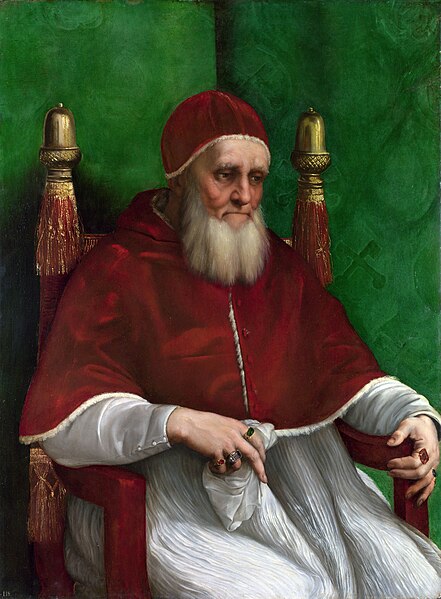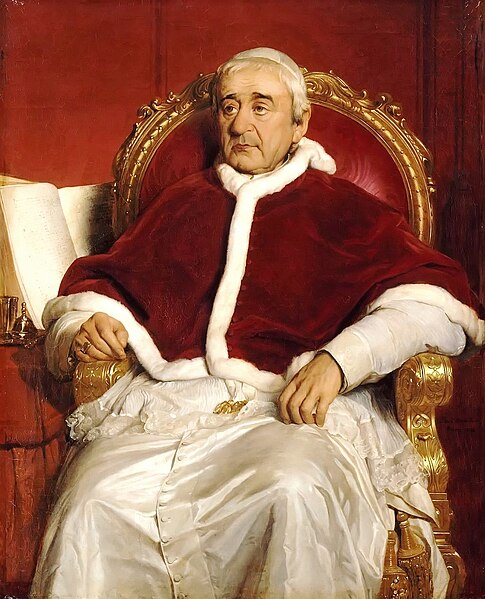Pope Julius II was head of the Catholic Church and ruler of the Papal States from 1503 to his death, in February 1513. Nicknamed the Warrior Pope, Battle Pope or the Fearsome Pope, he chose his papal name not in honour of Pope Julius I but in emulation of Julius Caesar. One of the most powerful and influential popes, Julius II was a central figure of the High Renaissance and left a significant cultural and political legacy. As a result of his policies during the Italian Wars, the Papal States increased their power and centralization, and the office of the papacy continued to be crucial, diplomatically and politically, during the entirety of the 16th century in Italy and Europe.
Portrait of Pope Julius II, 1511–1512
Bust of Julius II
Woodcut by Hans Burgkmair
Giuliano della Rovere (left, future Julius II), and Julius II's nephew, Clemente della Rovere (right), who safeguarded Giuliano's affairs while he fled to France following a dispute with Alexander VI
The Papal States, officially the State of the Church, were a conglomeration of territories on the Apennine Peninsula under the direct sovereign rule of the Pope from 756 until 1870. They were among the major states of Italy from the 8th century until the Unification of Italy, between 1859 and 1870.
The Quirinal Palace, 1777
Pope Gregory XVI
The Roman States
Roman States army








